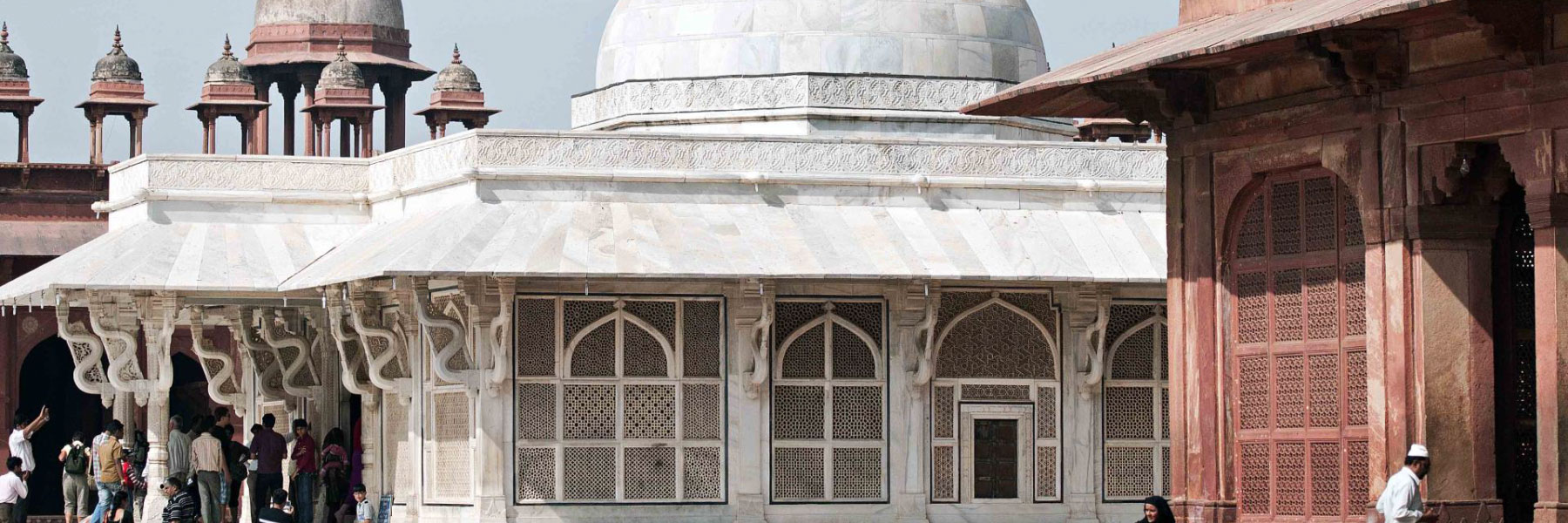
Sorry, we couldn't find anything that matches your search.
Destination

Famous Places to Explore in Hyderabad
A vibrant city with the imposing...

Raipur Tourist Places | Best Place to Visit
The stronghold of several erstwhile...

Ahmedabad
Declared as India's first UNESCO World...
#
Mughal emperor Akbar built his capital at Fatehpur Sikri between 1572 and 1585 AD. It was constructed using red sandstone. It is said that the emperor, who wished for a son, went to Sikri to get blessed by sufi saint, Sheikh Salim Chishti. He was soon blessed with a son and was prompted to establish his capital here, building a beautiful mosque and three palaces, one each for his three favourite wives. He named the city Fatehpur Sikri, meaning the city of victory. He also named his son Salim, after the saint who had blessed him.
Built on a stony ridge, Fatehpur Sikri lies richly enveloped in local folklore. One story goes that long before Akbar made it his capital, Mughal emperor Babur had named the city ‘shukri’ (thanks) as a gesture of acknowledgement to the local residents who had helped him win the Battle of Khanwa, in 1527, against Rana Sanga, a Rajput ruler from Mewar. His grandson, emperor Akbar, built the Buland Darwaza many years later after capturing Gujarat, and gave the city its current name.
Fatehpur Sikri’s monuments resound with stories and medieval anecdotes. A structure called Aankh Michauli (blind man’s buff), for instance, is believed to be where the emperor would play the eponymous game with his queens. A vast sandstone courtyard nearby is named after another game, Pachisi, and is a life-sized version of the Indian board game. Legend has it that the emperor played this game with women standing in the place of pieces. The Jama Masjid, one of the largest mosques in India, showcases the assimilation of Iranian architectural elements and was built in 1648 AD by Mughal emperor Shah Jahan's daughter, Jahanara Begum. Other monuments here include the Diwan-i-Khas, Mariyam’s Tomb and Birbal’s Palace. Panch Mahal, a four-storeyed columnar structure, is said to have been where the emperor and his wives would watch Tansen, among the most well-known court musicians of all time, perform.
The tomb of Salim Chishti, which lies at the heart of Fatehpur Sikri’s story, is an oasis of white in the midst of red sandstone, and attracts thousands of tourists. It still commands immense respect and faith from devotees, who come from far and wide with their ‘mannats’ or wishes and tie a thread for each wish, hoping for the sufi saint to bless them and make it come true. Sheikh Salim Chishti’s death anniversary is known as ‘Urs’ and includes a ceremony held here that is attended by devotees from across the world.










